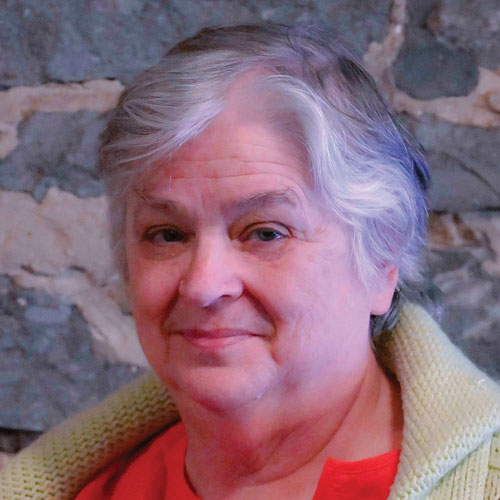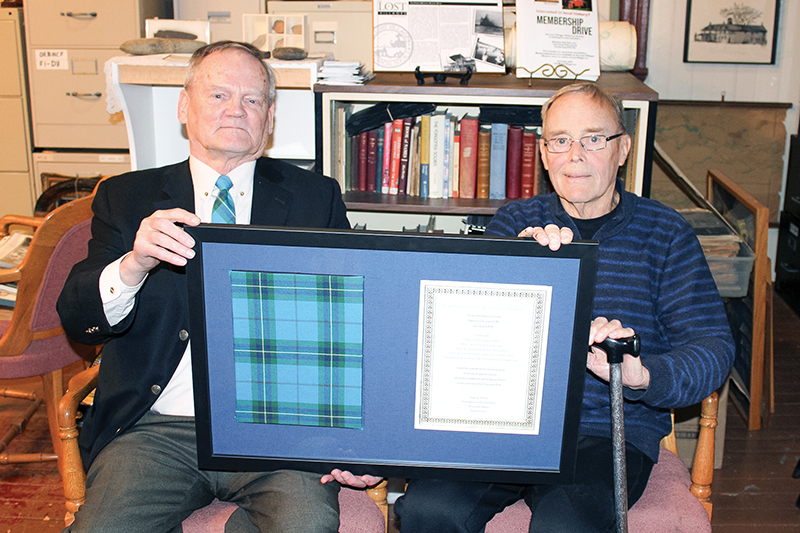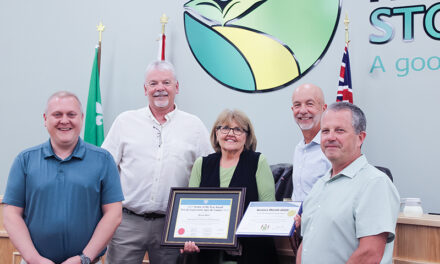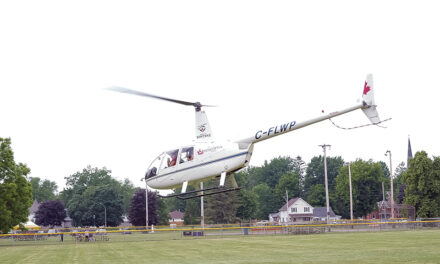From the left: Jim Duck and Jim Brownelll are pictured holding the framed registration certificate for the The Lost Villages of the St. Lawrence tartan, which includes a square of the tartan, in the Forbes Memorial Reading Room at the Lost Villages Museum. Thompson Goddard Photo
LONG SAULT – In 2018, The Lost Villages of the St. Lawrence tartan was registered by its creator Jim Duck with the Scottish Register of Tartans, with Lost Villages Historical Society (LVHS) President Jim Brownell presented with the certificate of registration by Jim Moram and Donna Stewart Moram during the LVHS April meeting.
“With my Scottish background I was very happy” said LVHS President Jim Brownell about the tartan. It was designed by Jim Duck who is described by Brownell as a “Friend of the Lost Villages”. Duck mentioned his motivation for creating the tartan was to promote the heritage of the Lost Villages of Eastern Ontario.
The project began in mid 2015 when Duck was investigating the purchase of a kilt made from the Hunter MacGregor, a family tartan. He noticed a program for creating tartans on the website of Houston Kiltmakers in Paisley, Scotland. Intrigued, he put his ideas into the program and decided on the colours to be used.
He spoke to Brownell about this project and after receiving the go-ahead continued with the project, with assistance from the kiltmaker in Scotland. The tartan was registered with the Scottish Register of Tartans on September 6, 2018.
Duck explained the tartan was created as a memorial to the six villages and three hamlets which were lost during the construction of the St. Lawrence Seaway and Power Project. He continued how there are nine squares in each sett, with each square representing these nine communities and the colours in the tartan are representative of physical attributes of the area. The colour blue represents the St. Lawrence River, with the white in the tartan for the froth on the pre-Seaway rapids. The grey signifies the rocks in and around the river, with the green representing the fields and forests bordering the St. Lawrence River.
Duck expressed a sense satisfaction when the project was completed, with both he and Brownell committing to investigating the possibility of having items such as ties, shawls and perhaps bookmarks made from the tartan in the future which would be sold in Mason/Lapierre Store, known to many as the General Store at the Lost Villages Museum.

Carolyn Thompson Goddard, grew up in Chesterville and attended North Dundas District High School. After completing her BA in Political Science at Carleton University she has worked as a medical secretary and library technician. In 2020 she graduated from Algonquin College with a diploma in Journalism and has been a reporter and column writer for The Chesterville Record for over 10 years.










